Thanks to the species’ inclusion in the Finding Nemo and Finding Dory films, the blue tang is one of the most recognizable species of tropical marine fishes. It also has many figures to its name including ones by Papo, Schleich, and Mojo. Today we’re looking at the 2017 Safari Ltd. figure, part of their Incredible Creatures line. Safari has produced three blue tang figures. In addition to this one there is also one included in the Pacific TOOB and a Good Luck Mini, assuring that this species is available in multiple sizes.
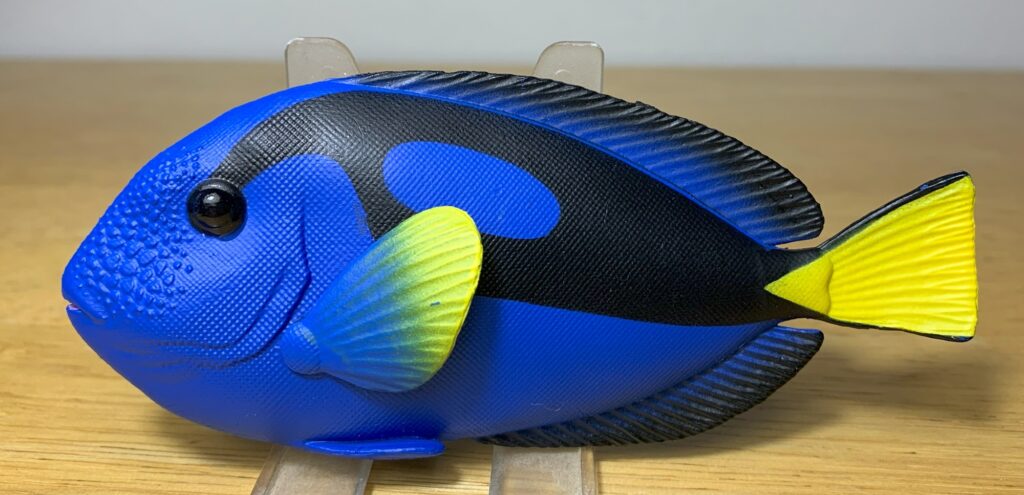
The blue tang (Paracanthurus hepatus) is found throughout the Indo-Pacific where it prefers to dwell in clear, exposed outer reefs with a moderate or strong current. They mostly feed on zooplankton but will occasionally eat algae too. The blue tang is the only member of its genus. Blue tangs belong to the surgeonfish family, Acanthuridae. Surgeonfish are so named because of the scalpel-like spines located on each side of the caudal peduncle. These “scalpels” rest within a groove and can be erected in self-defense, delivering a nasty wound to any would-be predator or careless human handler. Too bad we never got to see Dory utilize hers in the Finding films!
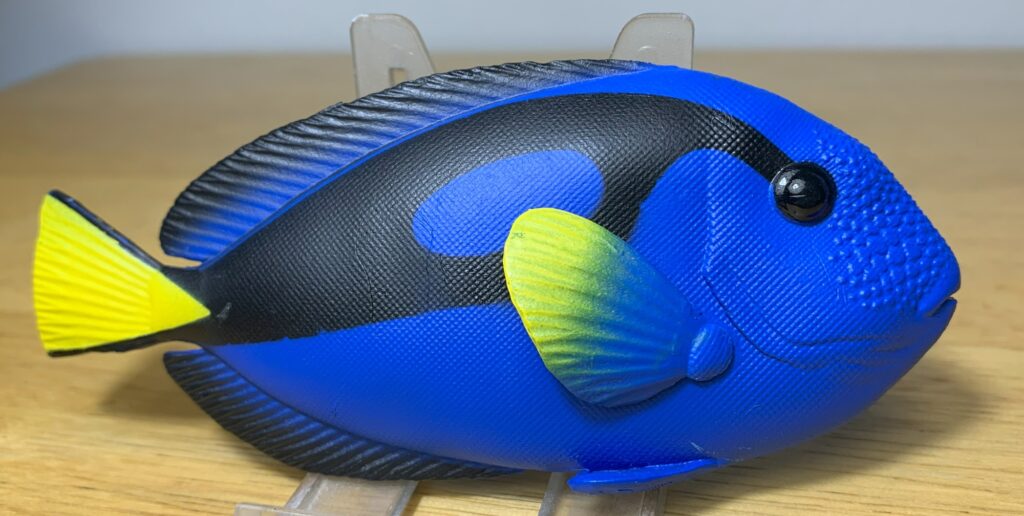
The Safari blue tang measures 4.5” (11.43 cm) in total length while the actual blue tang can reach a length of 12.2” (31 cm), putting the figure at 1/2.7 in scale. The figure is presented with the body gently curving to the left. I think it is meant to stand on its own, with the aid of its curve and pelvic fins, but mine does not.
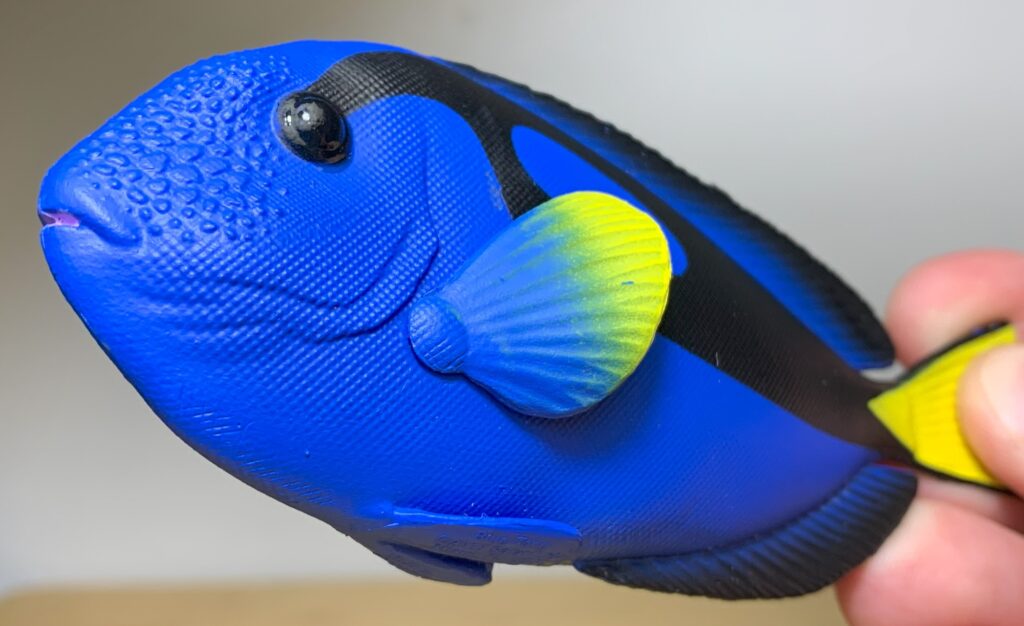
The figure is accurately oval shaped and laterally compressed, although body shape can vary with some individuals being deeper bodied and more circular in shape. No effort has been made to differentiate the dorsal and anal fin spines from the softer fin rays, and they all branch off at their tips. This is a disappointing oversight but since the fins are relaxed and held back it’s not obvious enough to fret over. The fin rays are nicely defined, at the very least, and that includes the inside surface of the pectoral fins which could have been easily ignored.
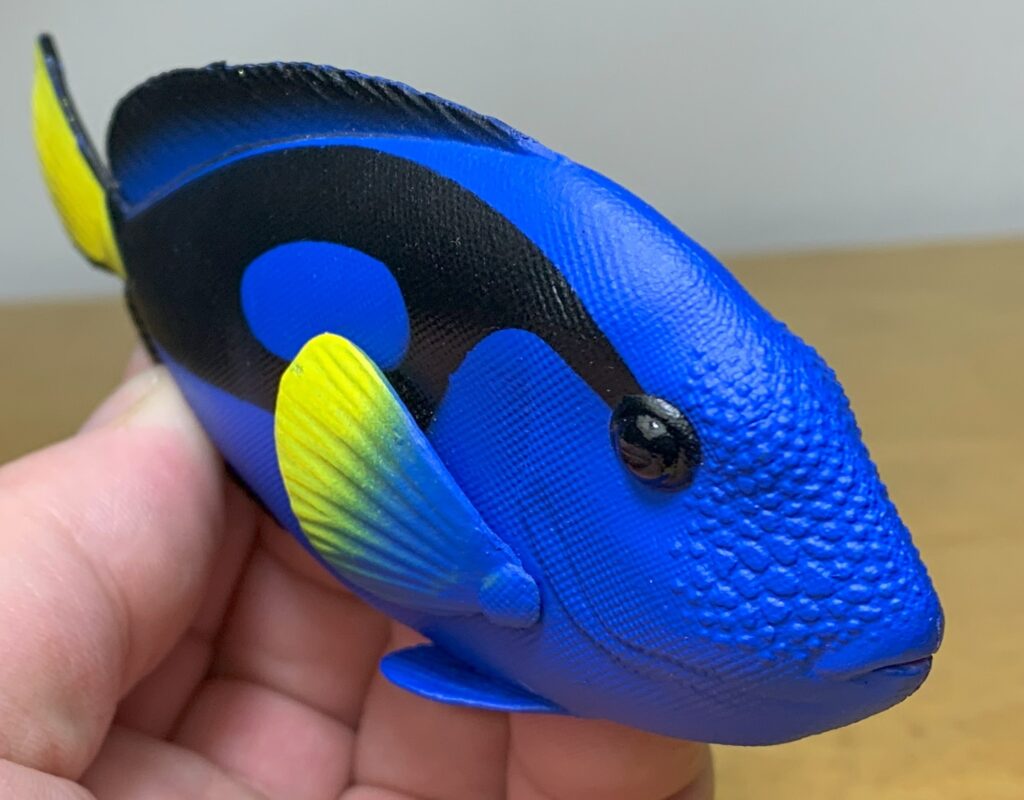
The figure is covered in impressively fine scales that give the figure a high-grade sandpaper like texture. The space between the eyes and the upper jaw has a rough texture that in life would be created by bony plates. The details of the operculum are well done. There is no indication of the scalpel on either side of the caudal peduncle, which is unfortunate.
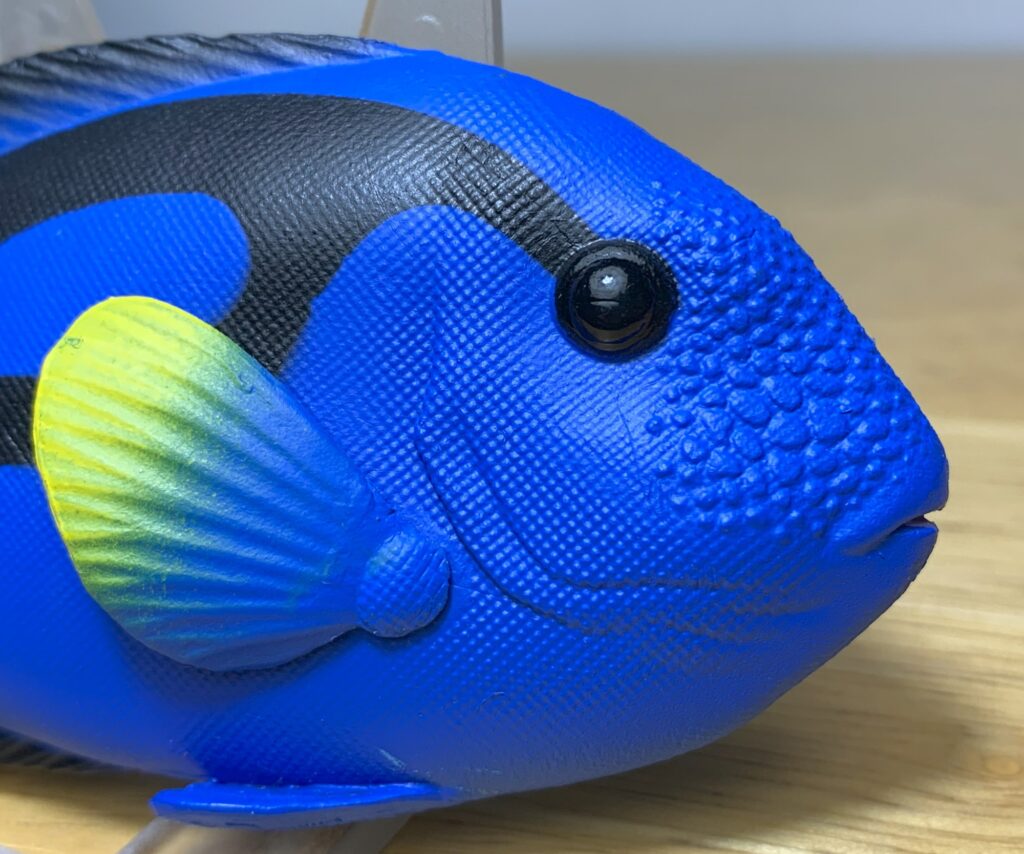
The figure is royal blue in color, with black markings extending from the eye, over the pectoral fin, and to the tail tips. A blue oval over the black markings create a painter’s palette-like shape on each side. The upper and lower edges of the caudal fin are black with the rest being yellow. The yellow extends onto the caudal peduncle, creating a triangle shape. The blue pectoral fins fade to yellow at their tips. Coloration can vary among populations, with some having yellow coloration along the belly. The big black eyes are bright and shiny, adding a lot of life to the figure.
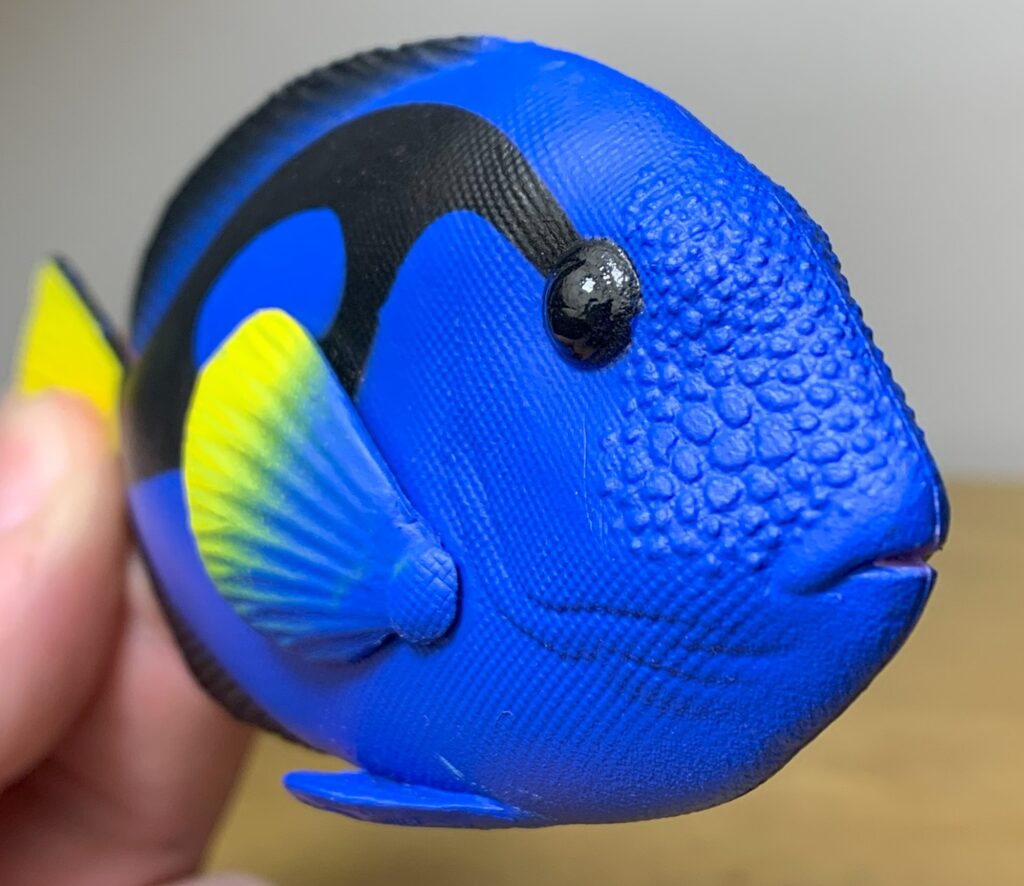
Aside from a couple of small anatomical oversights, the Safari blue tang is an excellent figure. I particularly like the vibrant coloration, lifelike eyes, fine scale detail, and rough texture over the face. If you collect larger sized fish figures, I highly recommend it. The Safari blue tang is currently available and retails for about $8.49.
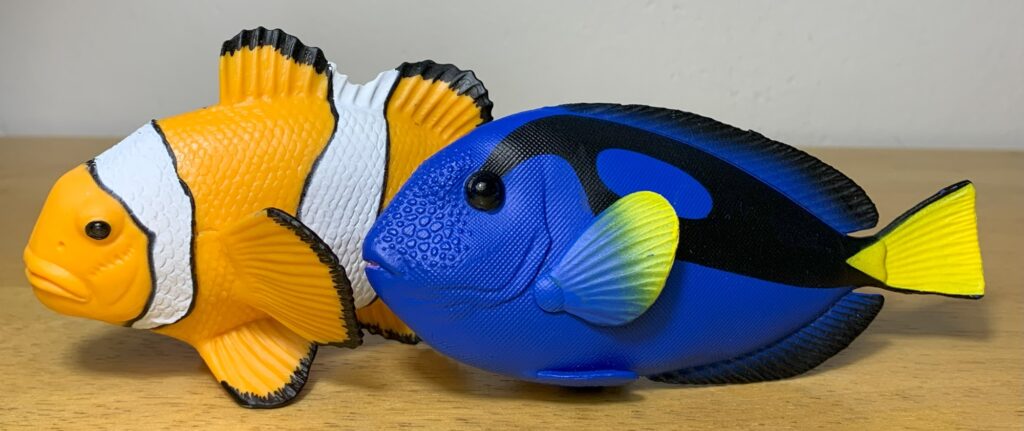
Disclaimer: links to Ebay and Amazon on the AnimalToyBlog are affiliate links, so we make a small commission if you use them. Thanks for supporting us!




A-dory-ble! 8)
Funny thing is I recommended Safari ltd to make one 9 years ago to tie in with the finding Dory release and bam! They made it a year later